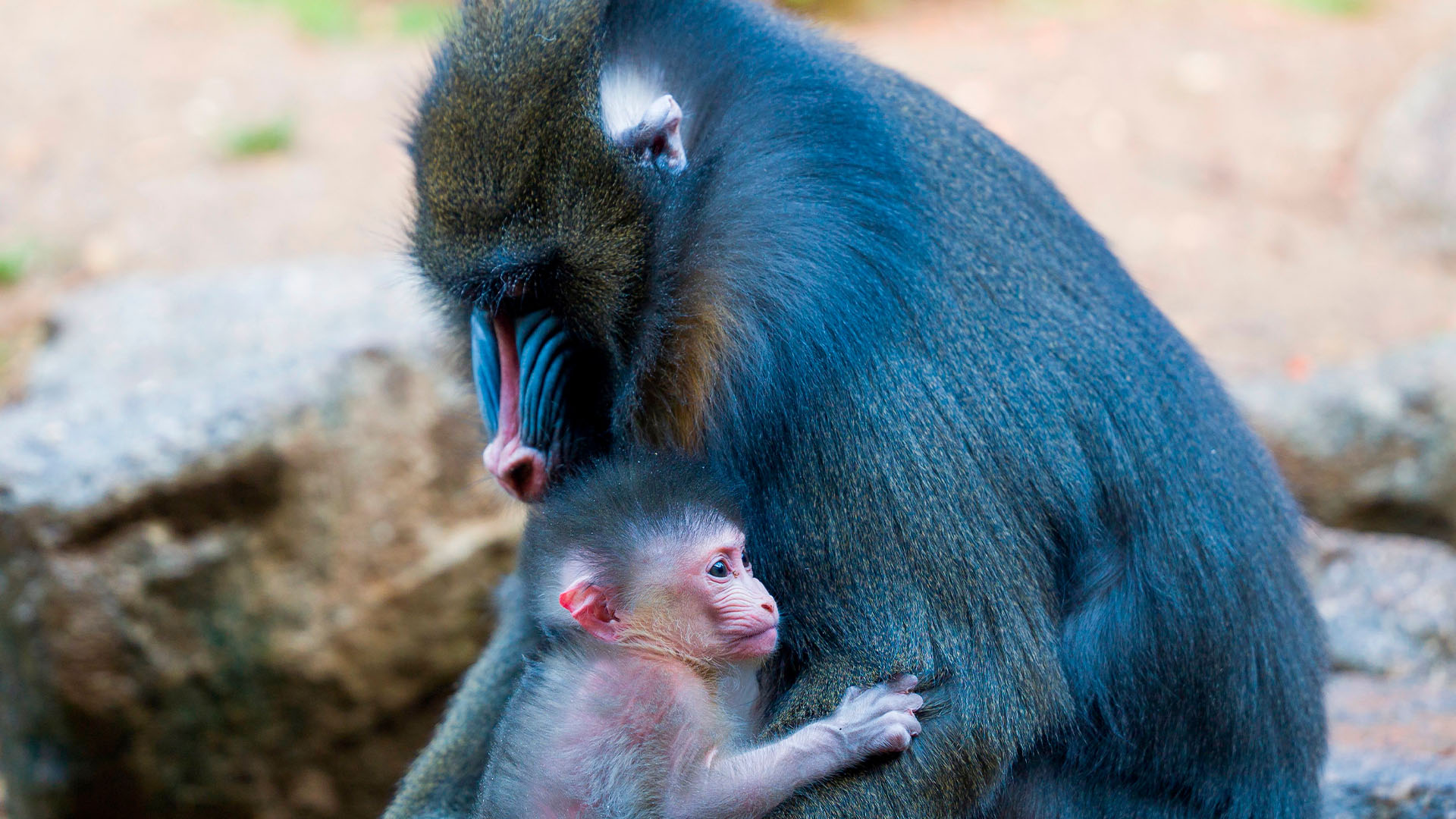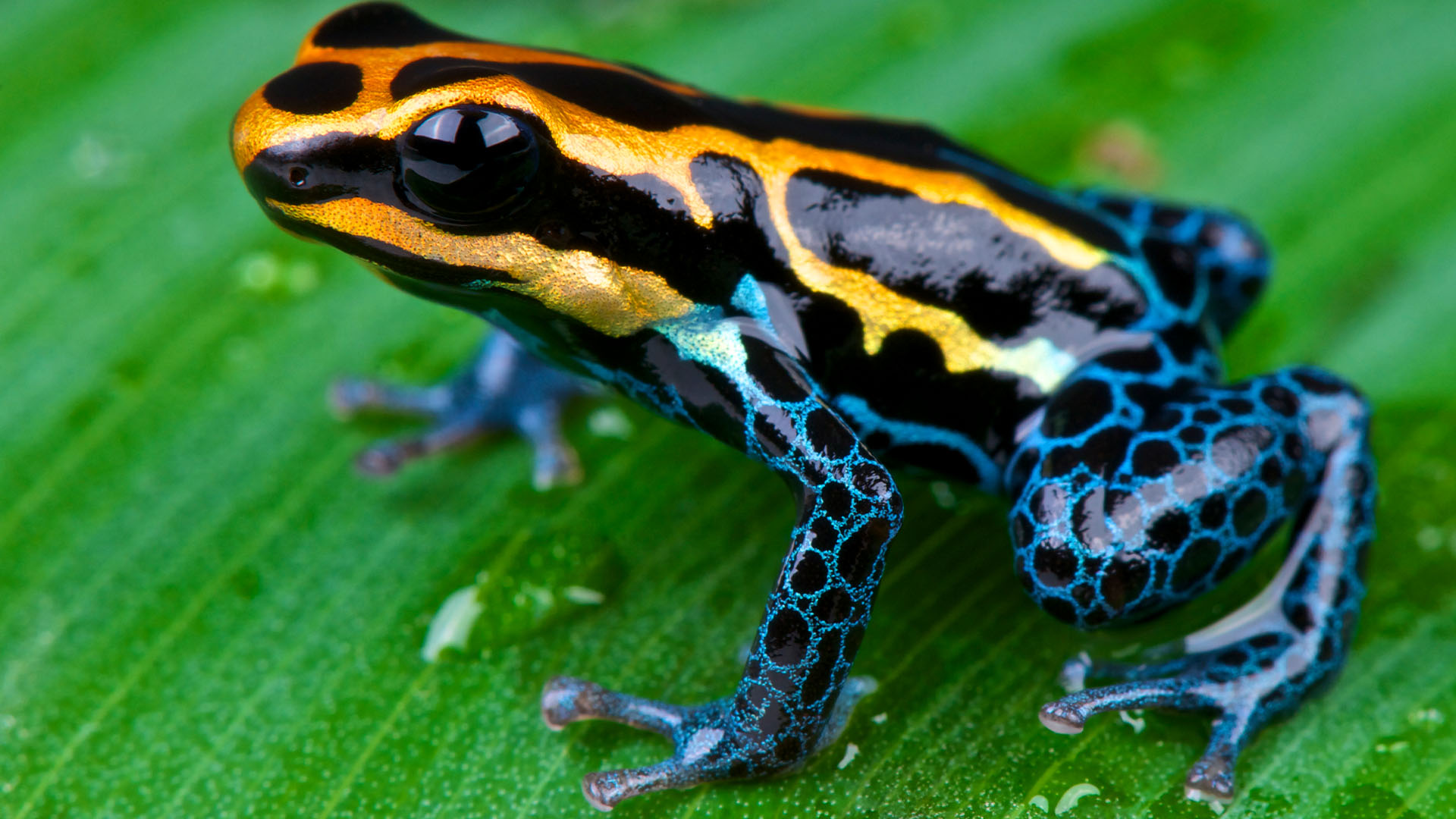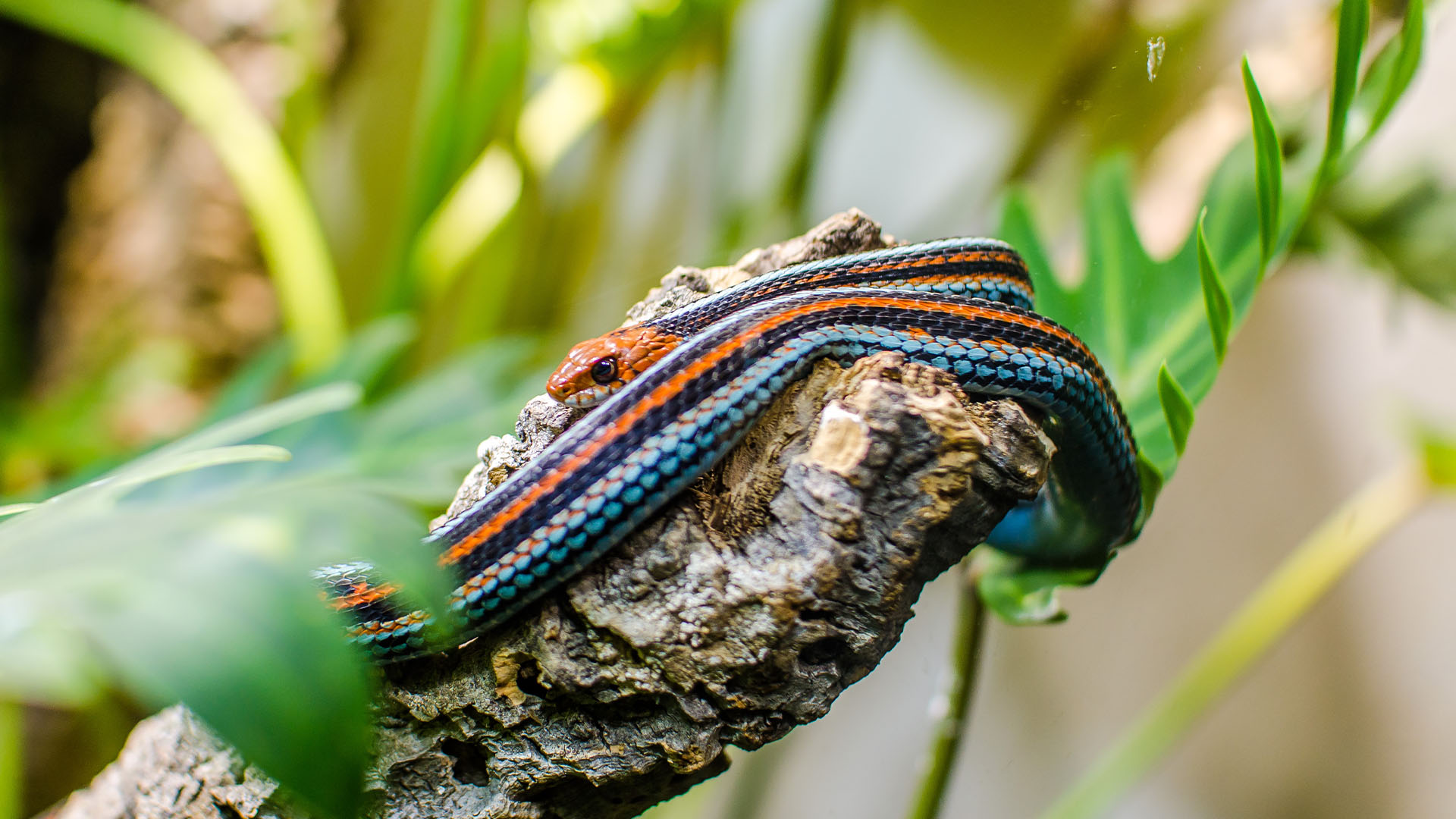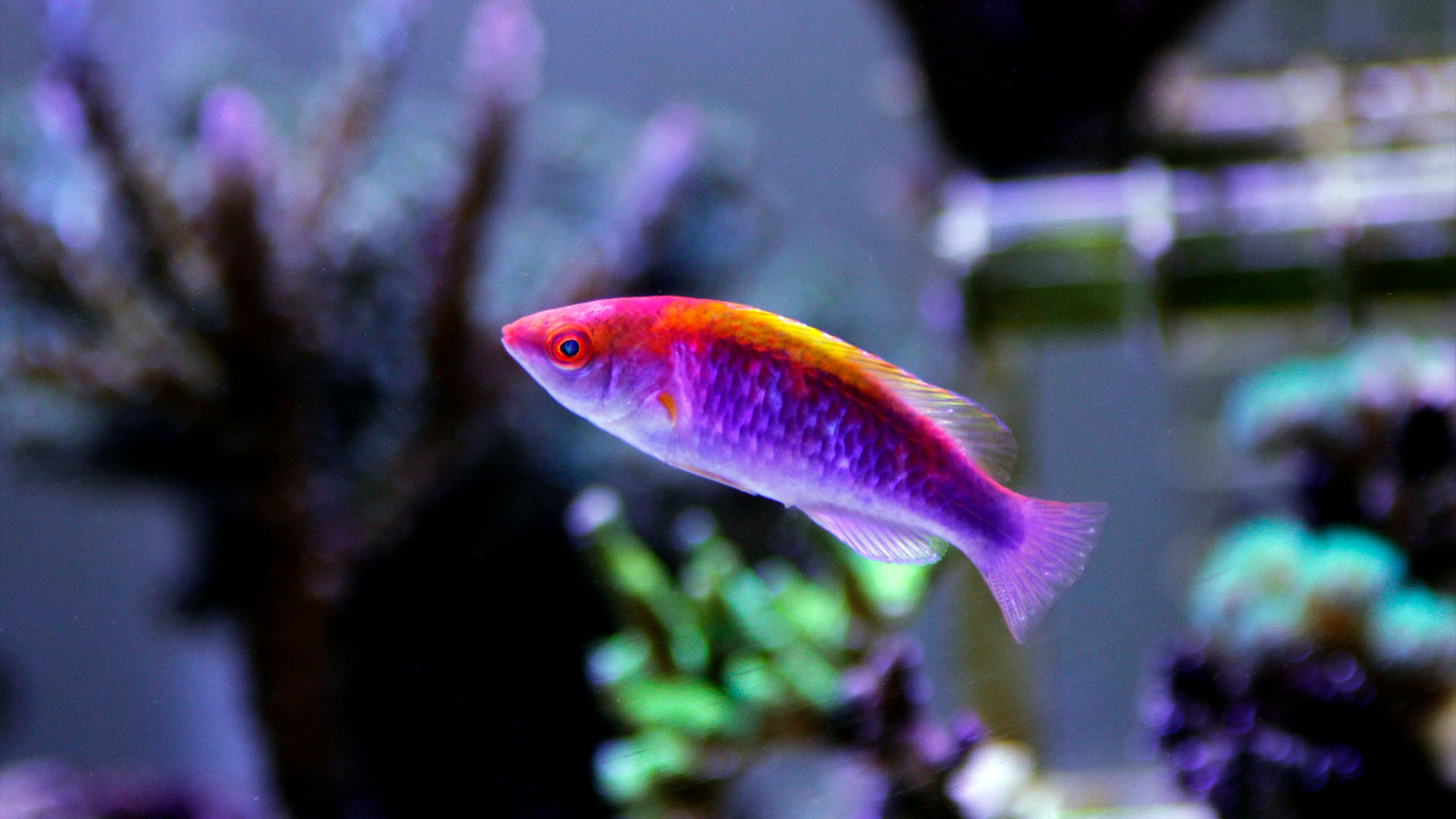What is the most colorful animal on Earth?
Neon green, ultraviolet, rainbows — the variety of colors animals can make seem endless.
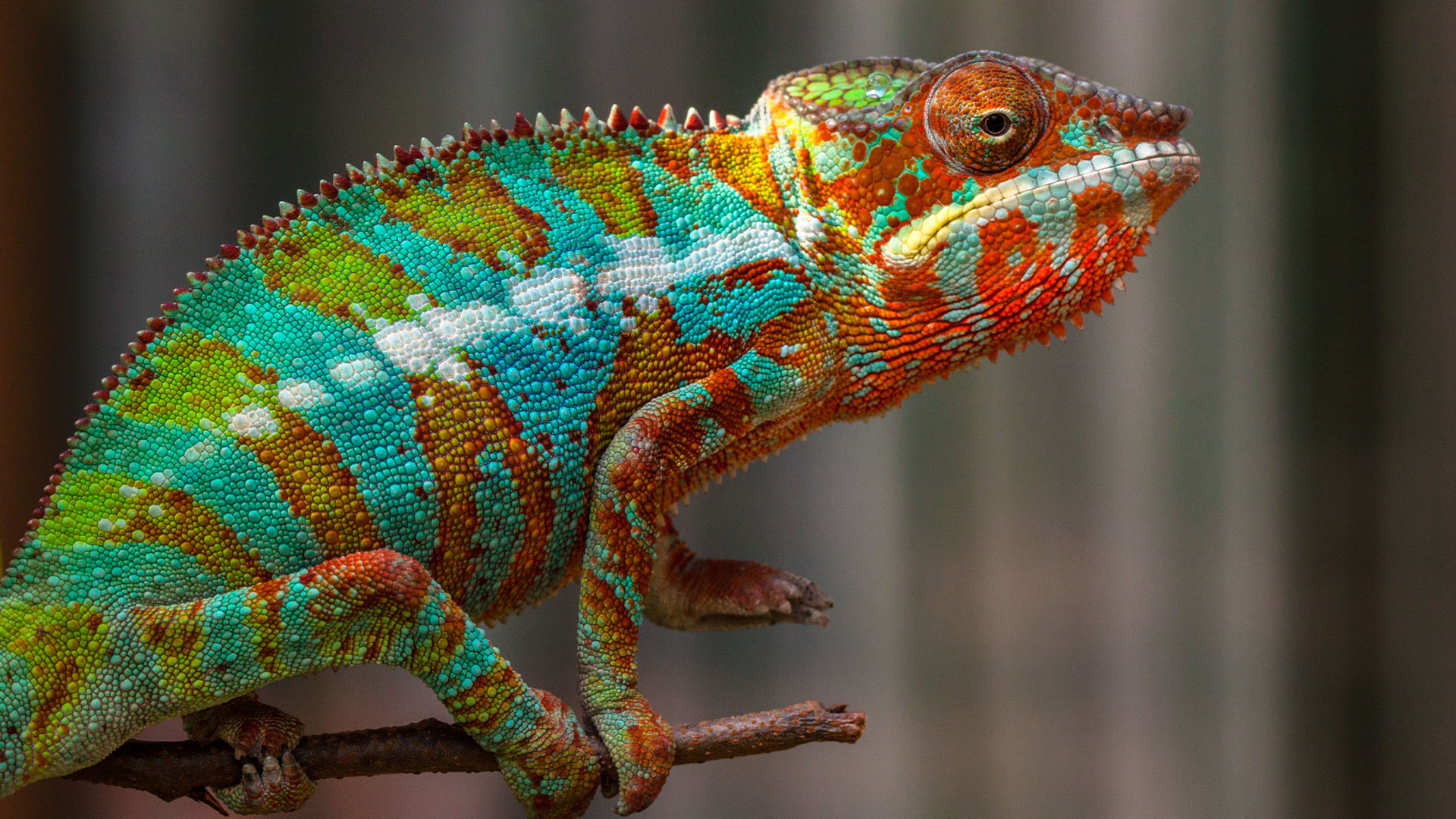
The animal kingdom is a carnival of color: There are birds that dress in neon plumage, frogs whose skin gleams in an array of metallic hues, and sea animals whose bodies radiate rainbows. Just about every color you can imagine exists somewhere, masquerading across an animal's skin, feathers or scales.
Amid this kaleidoscopic competition, which is the most colorful animal on Earth?
And how to judge? Do we choose by number and diversity of colors, or how bright, or how surprising they are? The sheer variety of color in the animal kingdom probably makes it impossible to choose just one, and it quickly becomes a subjective quest. In fact, each of the main animal groups have their own strong contenders.
Related: What's the biggest group of animals ever recorded on Earth?
Most colorful mammal
There are many possibilities on show in the vast palette of the animal kingdom. Take the mandrill (Mandrillus sphinx), an Old World monkey from equatorial Africa, and one of the few truly colorful mammals. Its luminous blue face and behind are the products of meticulously arranged collagen fibers that reflect certain wavelengths to produce the vivid hue. Paired with its yellow beard and scarlet snout, this monkey is a contender for the world's most colorful mammal. A runner-up is the Malabar giant squirrel (Ratufa indica), which are rodents in India that sport the colors orange, purple, white, brown and maroon, which may help them blend in with the rainforest's vibrant colors.
Most colorful amphibian
However, mammals are easily outdone by the competition from other animal groups, like amphibians — especially the poison dart frogs where color is the default, rather than the exception. Take the Amazon poison frog (Ranitomeya ventrimaculata), whose skin shimmers in an ombre display of red, orange, and blue. Then there's the nearly unmatched brightness of the red-eyed tree frog (Agalychnis callidryas), with its lime- green back, blue sides, and tangerine toes.
Most colorful reptile
Not to be outdone, reptiles have their own strong contenders, — including the San Francisco garter snake (Thamnophis sirtalis tetrataenia), dressed in luminous turquoise, red and black stripes; and the Texas coral snake (Micrurus tener), adorned in brightly-painted rings. Then there are the sunbeam snake (Xenopeltis unicolor) and the white-lipped python (Leiopython albertisii), two species that gleam in all the colors of the rainbow when the sun strikes their iridescent scales, thanks to nanostructures called iridophores that refract light.
Get the world’s most fascinating discoveries delivered straight to your inbox.
The Broadley's flat lizard (Platysaurus broadleyi) packs a rainbow onto its small body, with its sapphire-blue crown and acid-yellow and orange legs popping against the beige rocks where it suns itself in its native southern Africa. Meanwhile, a different genus is the favorite of John J. Wiens, professor of ecology and evolutionary biology at the University of Arizona: "One of the most colorful and interesting groups that I have worked with are spiny lizards (Sceloporus) in northern Mexico," he said, describing creatures with vivid blue and red scales.
But eclipsing all of these reptiles perhaps is the panther chameleon (Furcifer pardalis), a creature so colorful, it looks as though it's wearing a tie-dyed onesie.
Most colorful bird
When it comes to birds, "hummingbirds may have the most diverse colors ," Wiens said. Just consider the breathtaking hues of the fiery-throated hummingbird (Panterpe insignis), and the rainbow starfrontlet (Coeligena iris).
Related: Are birds dinosaurs?
Most colorful fish
Some of the most colorful creatures, however, may reside below the waves — especially in the polychromatic world of coral reefs, where many animals wear outfits to match their habitat. Some of the brightest contenders are fairy wrasses (Cirrhilabrus) and flasher wrasses (Paracheilinus), whose scales are so saturated in pink, vermillion, yellow and blue that they almost don't look real. The algae-grazing rainbow parrotfish (Scarus guacamaia) stuns in magenta, mint, and turquoise — producing color combinations that change throughout its life.
Most colorful cephalopod, mollusk or nudibranch
And a huge family of reef-grazing mollusks known as nudibranchs (Nudibranchia) collectively leave no color untouched.
One of the most impressive coral reef residents is the peacock mantis shrimp (Odontodactylus scyllarus); researchers think its psychedelic armor might reflect its uniquely complex vision, which can detect ultraviolet and circularly polarized light. "Given that circular-polarized vision is really rare, the underlying assumption is that these mantis shrimps are signaling to one another!" Vinod Saranathan, an associate professor of biological sciences at the School of Interwoven Arts and Sciences at Krea University in India, told Live Science.
Elsewhere in the more sedate midwaters of the ocean, comb jellies (Ctenophora) release rare flashes of color. These creatures use the fast pulsing motion of hair-like structures called cilia to propel them through the water, and as these curved hairs refract the light, they create the effect of a rainbow radiating through the creature's body.
But perhaps the most spectacular display of color from a sea creature of all hails from that great family of color magicians, the cephalopods. A changing array of colors bloom restlessly across the gossamer skin of the rainbow blanket octopus (Tremoctopus spp.), an extremely rare creature found in tropical and subtropical seas.
With its ever-shifting canvas producing a constant stream of color, could this octopus be our winner?

Emma Bryce is a London-based freelance journalist who writes primarily about the environment, conservation and climate change. She has written for The Guardian, Wired Magazine, TED Ed, Anthropocene, China Dialogue, and Yale e360 among others, and has masters degree in science, health, and environmental reporting from New York University. Emma has been awarded reporting grants from the European Journalism Centre, and in 2016 received an International Reporting Project fellowship to attend the COP22 climate conference in Morocco.


